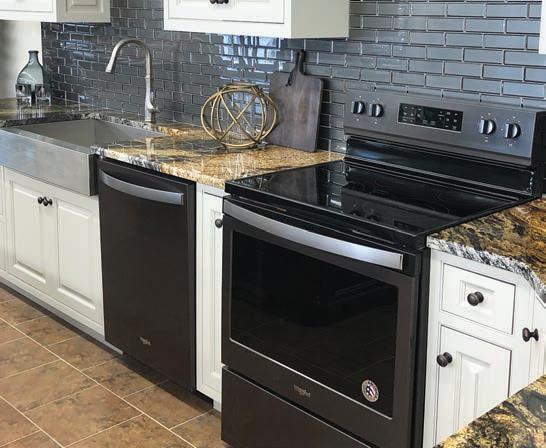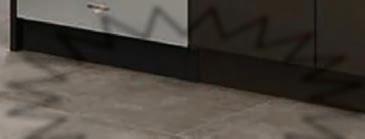March 15, 2023












March 15, 2023


















The Advantages of Hiring Contractors


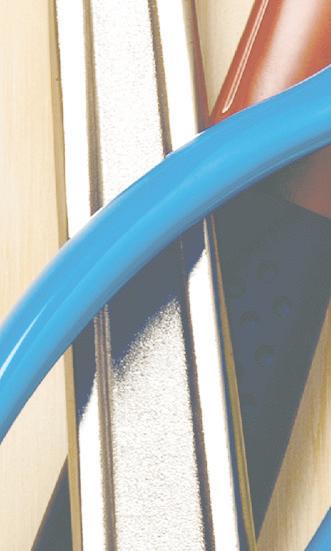
Hire For Home Reno








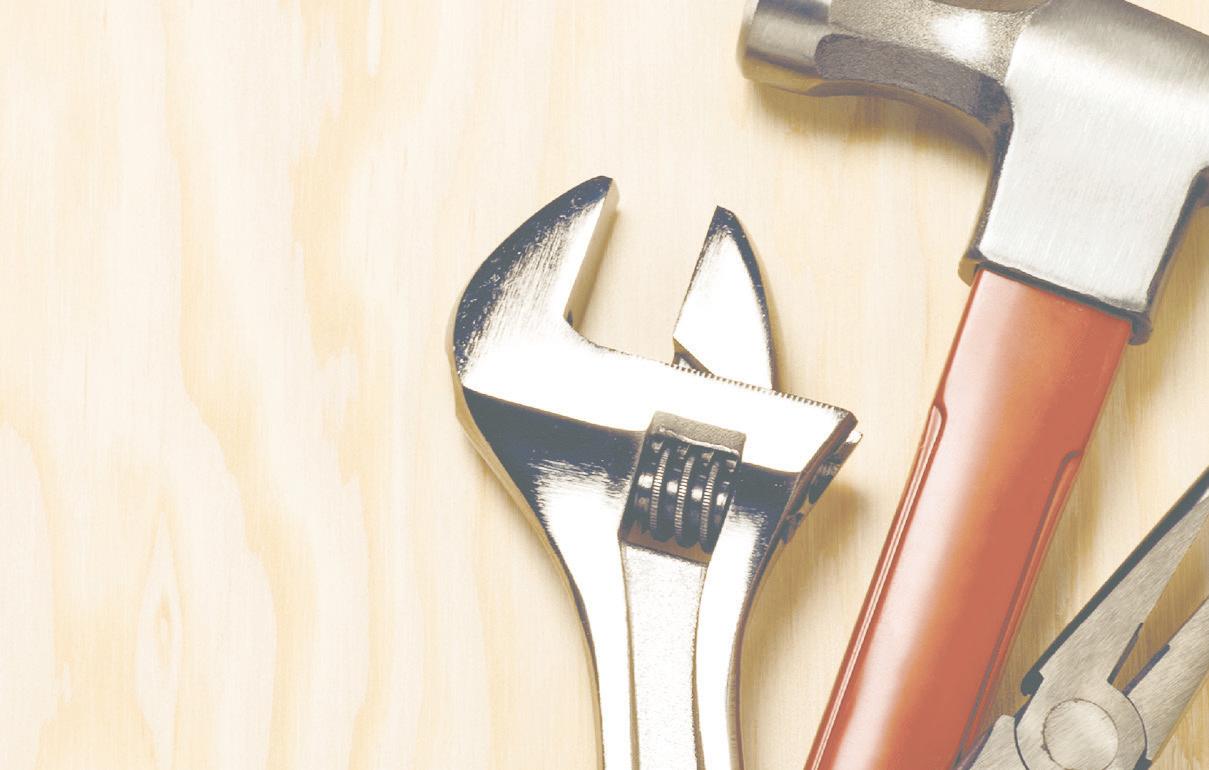





– Page 2
Budget Friendly Decor

Make Interior Spaces More Inviting– Page 6
The Hidden Costs of Doing It Yourself

The Dilemma Of DIY

– Page 38



Over 100 Businesses Ready to Help With All Your Home Improvement Needs!

Asense of pride comes from a successful do-it-yourself home improvement project. However, quite often inexperience and time constraints lead homeowners to turn to professional contractors to make sure jobs get done correctly and on time.
Allied Market Research reported in 2021 that the home improvement services market is predicted to reach $585.3 billion by 2030. The following are some reasons why renovation-minded homeowners benefit from the services of professionals.

Tasks can be overwhelming: A home remodel is a large undertaking with many different steps. Contractors who have been around the block a time or two understand how to organize and manage time to get the job done. Plus, they’re devoting all of their attention and time toward the remodel when on the job. This differs from when a do-it-yourselfer tries to work on a remodel in between other responsibilities.
Network of suppliers: A good general contractor will have a list of material suppliers he or she routinely uses. Often contractors become preferred sellers, which means they get a lower wholesale rate, and will often pass those savings on to the customer.
Licensed and bonded protection: Li-






censed and bonded contractors not only have the skills for the job, they have insurance protection behind them. Therefore, if an injury occurs or the job goes awry, the homeowner will be protected from liability. A license means the contractor will have to uphold licensing standards, which could mean staying current on trade practices and skills.
Expertise: Experienced contractors have done the work they have been hired to do many times, which means their skills are fine-tuned. Knowing the correct way to do a job results in fewer errors (and thus fewer repairs), shorter time periods to get the work done, and potentially lower costs overall.
Frees up time: Homeowners who hire out for remodels can utilize their time in other ways, such as on the job or spending time with family.

Reduces stress: Putting the work in capable hands means homeowners do not have to educate themselves about how to do the task, purchase tools, prevent injuries, and/or deal with potentially negative outcomes. Certainly having extra people in the house can be challenging, but it may not equal the stress caused by tackling a job on one’s own.
There are many advantages to hiring contractors to renovate a home instead of taking the DIY route.







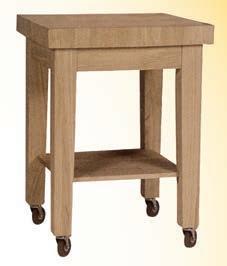
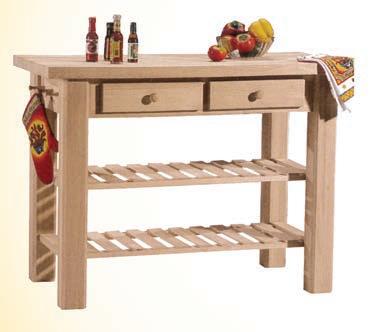

























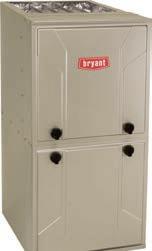



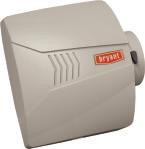















Home interiors can be spruced up in a number of ways. Ideas run the gamut from relatively inexpensive changes in paint color to more extensive (and expensive) remodels that may include demolition and reconstruction. Investing in new home decor is another way to breathe new life into spaces, and this approach that falls somewhere in the middle in regard to cost.
Material and product costs remain high across the board, so individuals interested in changing the furniture and other design elements in their homes might be seeking ways to do so in the most affordable way possible. In such instances, homeowners can try these budget-friendly ways to overhaul their home decor.



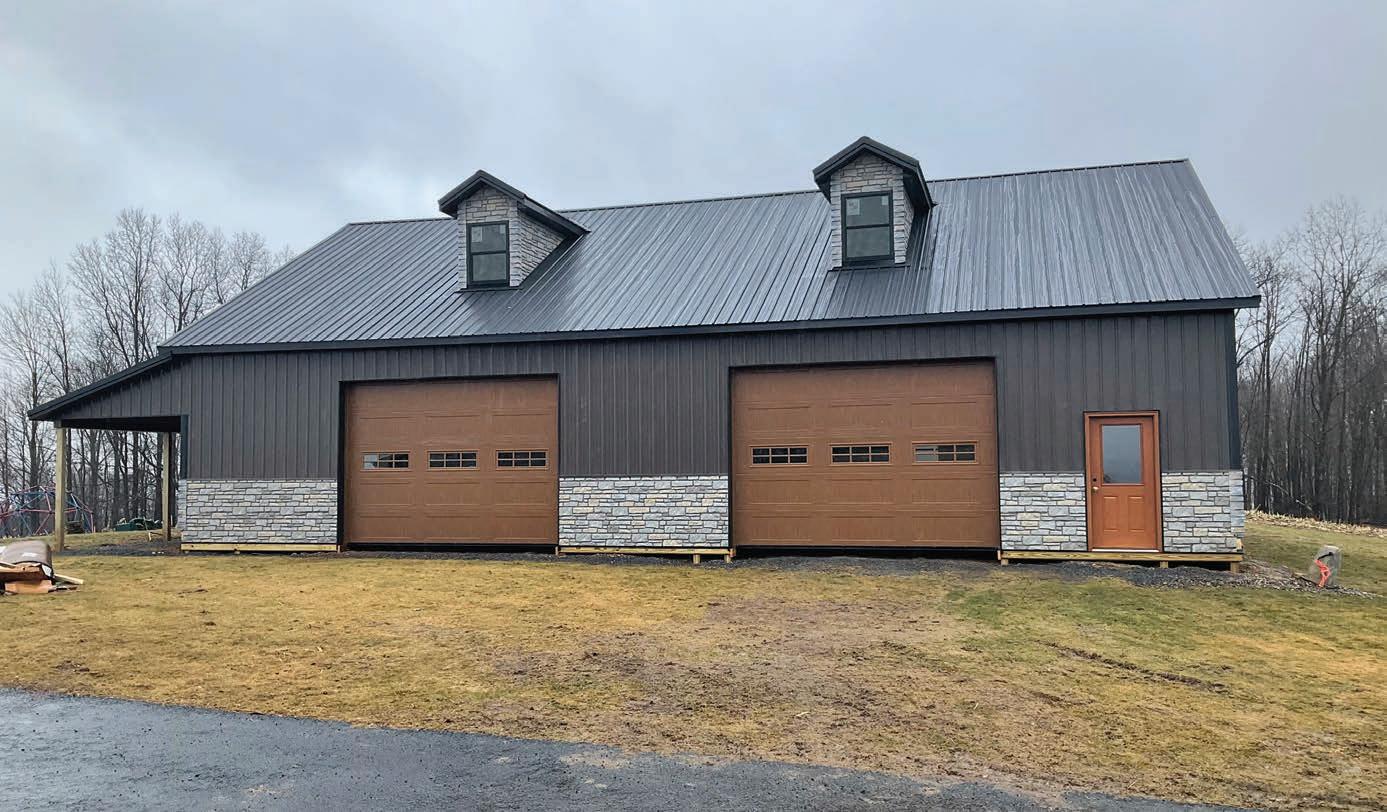
Create the illusion of more space. Light, bright and white are key attributes to remember when selecting design elements for rooms where you want to create the illusion of more square footage. Painting the walls in very light colors, increasing natural and artificial light, including using well-placed mirrors to reflect light, and decorating with light-colored fabrics can help a space seem more roomy.
Replace the accessories. Replacing curtains, area rugs, throw pillows, and chair cushions is an easy way to change a room without a big investment. Consider updating some wall art and tying color schemes together with all of the newly introduced elements.
Splurge on statement pieces that will be

used frequently. These may include chandeliers, unique rugs or an eye-catching piece of furniture.



Shop ‘discount’ stores for furniture and accents. Traditional design centers can be great places to find plenty of high-quality merchandise. However, don’t overlook local discount or close-out centers that may have items at very reasonable costs. Stores like Home Goods, At Home and Big Lots routinely get new merchandise that changes with the season, helping homeowners to refresh their spaces without having to dig deep into their pockets. Shop the high-end stores for inspiration, then try to find “dupes” in the discount stores that will mimic the looks for less.

Cut out the clutter. Modern homes are lean and clean. A home’s interior instantly looks more high-end and appealing when the clutter is removed. Consider keeping main living areas free from too many knickknacks and other accents. If you want to display a special collection, set aside a room specifically for such items.
There are many budget-friendly ways to make interior spaces more inviting.

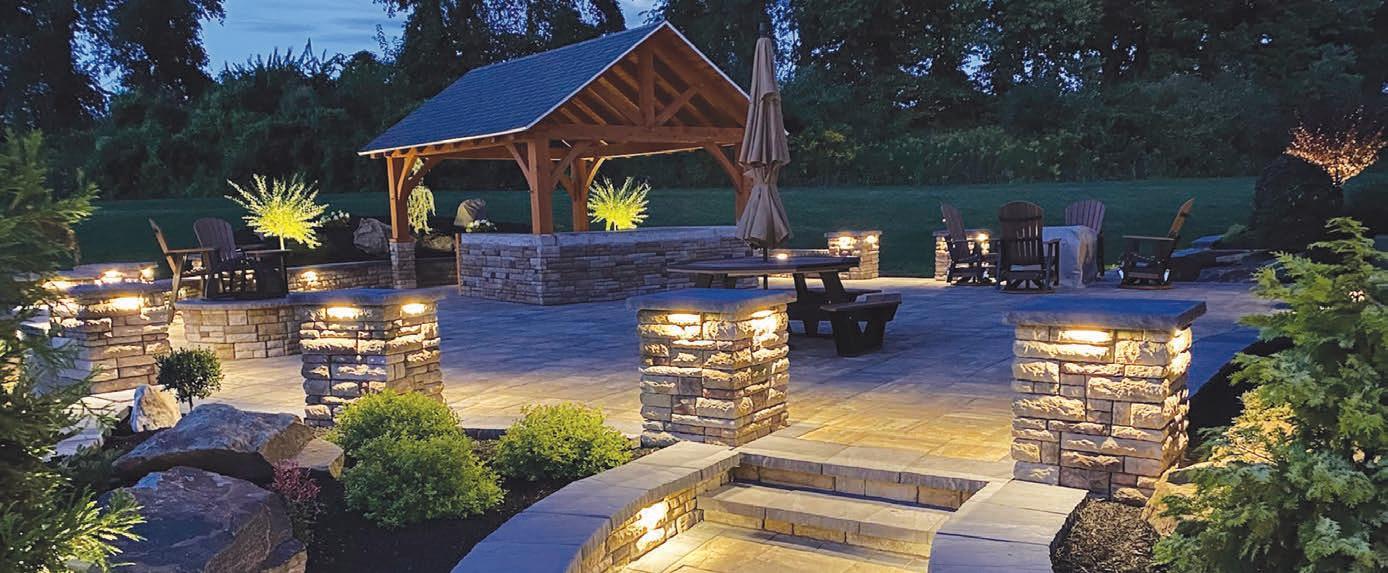

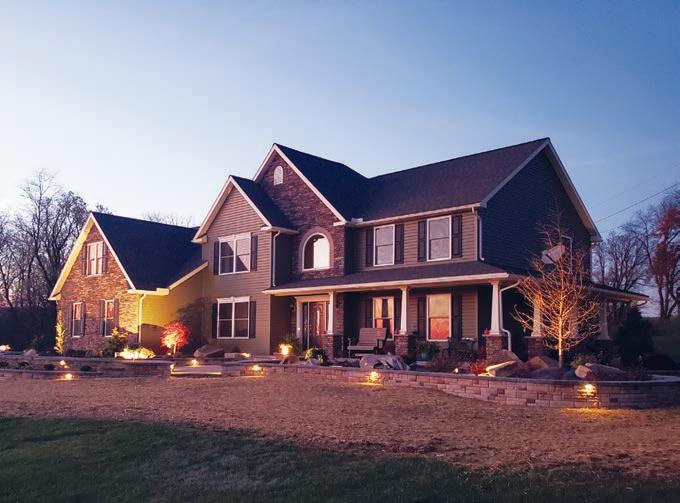
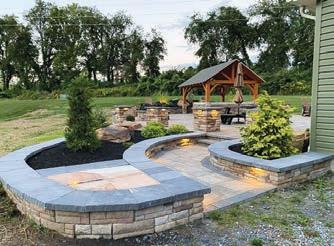
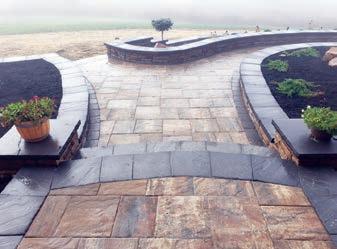


Remodeling with a return on investment in mind can be a smart strategy for homeowners, whether one is thinking about moving in the next few months or further down the road. Though this approach is an inexact science, in many instances, it’s savvy for homeowners to consider what buyers may want when planning home improvements.
Homeowners may be surprised to learn which renovations garner the best ROI at resale. The home loan and refinancing company RenoFi indicates that overall home improvement projects provide a 70 percent ROI on average. Many highROI projects add functional space and improvement. The following are some exterior renovations that help homeowners recoup the most money at resale, according to Remodeling magazine’s “2022 Cost vs. Value Report.”
1. Garage Door Replacement: 93.3 percent recouped of $4,041 cost

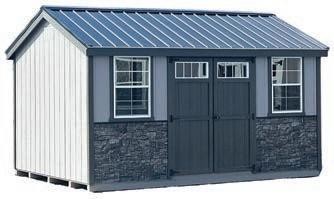
2. Manufactured Stone Veneer: 91.4 percent recouped of $11,066 cost


3. Siding replacement (Fiber Cement): 68.3 percent recouped of $22,093 cost

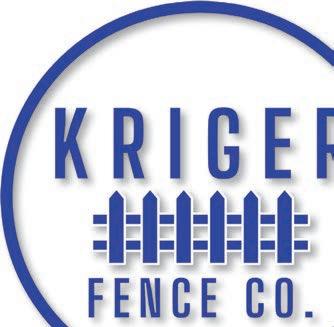

4. Window replacement (Vinyl): 67.5 percent recouped of $20,482 cost


5. Siding replacement (Vinyl): 67.2 percent recouped of $18,662 cost


6. Window replacement (Wood): 66.3
percent recouped of $24,388 cost
7. Deck addition (Wood): 64.8 percent recouped of $19,248 cost

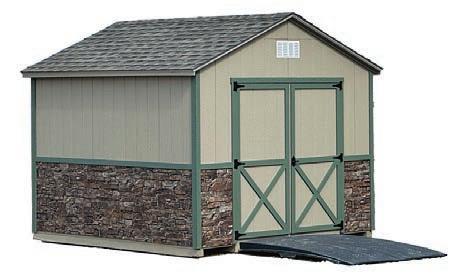
8. Entry Door Replacement (Steel): 63.8 percent recouped of $2,206 cost
The majority of renovations on Remodeling magazine’s list of the best investments are exterior renovations, making this area of a home a particular point of interest for homeowners. The only interior project that cracked the Top 10 ROI for projects was a minor midrange kitchen remodel.
Exterior renovations perhaps add the most bang for your buck because they’re not only functional, but also because they add immediate curb appeal. Much in the way it has been said people eat with their eyes first — which is why chefs spend so much time on elaborate plating — buyers will judge a property by how it looks when they arrive, even before they’ve stepped inside a home. In essence, home buyers often judge a book by its cover. A worn exterior may indicate to potential buyers that the home was not maintained, however false that assumption may be. It’s important for homeowners to consider all factors before beginning a renovation. Certain projects offer a stronger return on investment than others, and that’s a significant consideration for homeowners thinking of selling their homes.

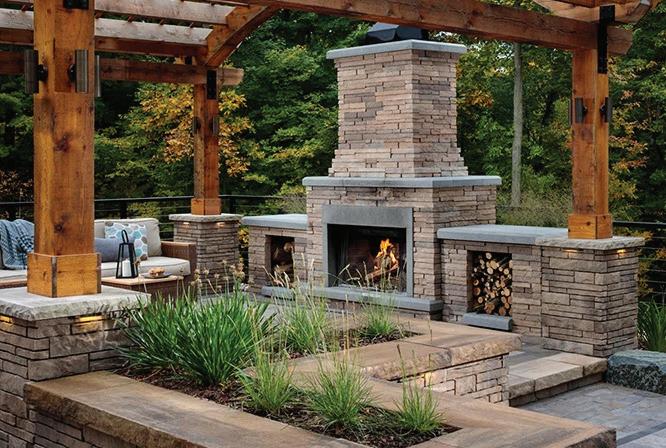
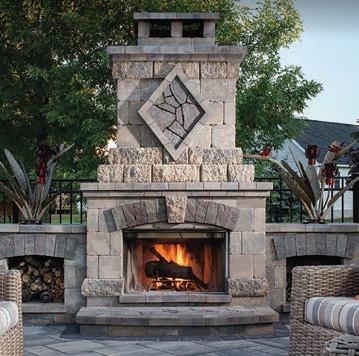





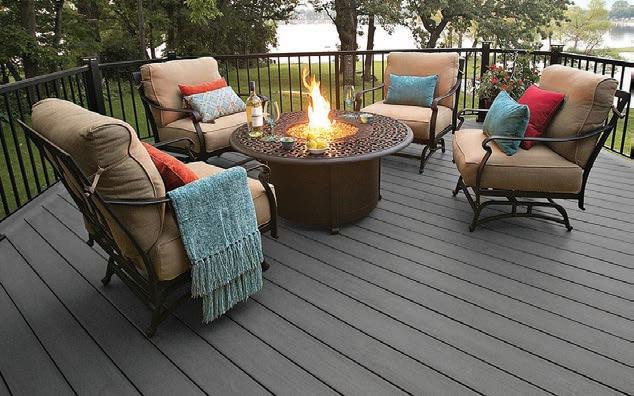
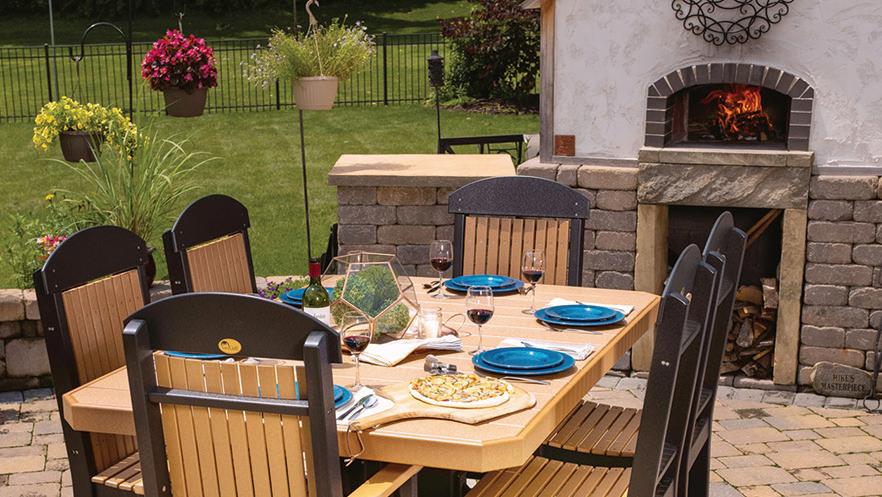
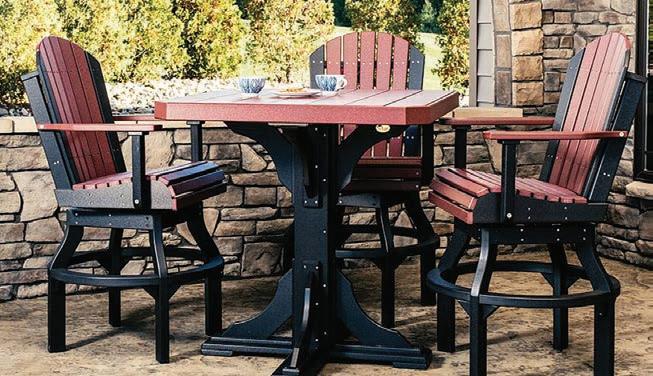









Buying furniture can be an exciting prospect. The opportunity to breathe new life into a home with the addition of different furnishings inspires many people. However, at the same time, searching for furniture can be a tad overwhelming, especially when homeowners do not know where to begin.

Statistics Canada reports that Canadians spend an average of $934 on furniture each year. The Bureau of Labor Statistics reported that, in 2017, Americans spent an average of $2,484 on furniture. While furniture may not be the most costly investment, it’s also not the cheapest, which is why getting it right is important.



Determine your needs






The first step in purchasing new furniture is to decide what is needed. Assess current furniture and think about what works for certain pieces and what doesn’t. Then you can gear purchases around desired features.

For example, if you’ve determined chenille fabric holds on to too much pet fur, the next couch may be leather or microfiber.

Measure more than once










Measure your room multiple times and create a mock floor plan. This will help when figuring out if certain pieces can fit into the space. Some retailers even offer floor plan software on their websites so that you can upload the dimensions of your room and see how certain items will fit in your spaces. In addition, be sure to measure the width of doors to ensure that it’s easy to get the furniture into the home when delivered.




Determine your style

Figure out which style best fits your

personality and lifestyle. This may be traditional, transitional or modern. Incorporate pieces accordingly, or mix and match to create a look that is completely unique.

Confirm materials

























Consider your budget when choosing the construction materials for the furniture. Solid wood tends to be more expensive, but often more durable than engineered products. In addition, check to see how items are built. Pull out drawers and check hinges to ensure the quality is there. Save money on sales






Furniture can be expensive, but there is room for savings. Shop when retailers offer seasonal sales. Consider warehouse retailers, which often sell select items at a discount. Read reviews








Before taking the plunge, be sure to read reviews of items and retailers. While items may appear perfect, reviews can shed light on how pieces stand up to wear and tear.







Shopping for furniture means taking steps to measure, match style, read reviews, and find pieces that fit homeowners’ lifestyles.


Spring is a season of renewal. When the flowers are blooming and the trees are budding and the weather is pleasantly warm, people often feel inspired to make changes around their homes. Work may begin with culling belongings and organizing essentials.

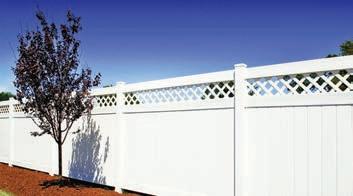

There is debate regarding where the practice of “spring cleaning” originated. Some researchers link it to certain religious groups. It has long been an ancient Jewish custom to thoroughly clean a house in preparation for the springtime feast of Passover. The house is scoured to remove any yeast bread, or chametz, from the home. Similarly, members of the Greek Orthodox church celebrate “Clean Week,” which is a week of cleaning before Lent. In Iranian culture, families spend days cleaning prior to the Persian New Year, which begins on the spring equinox. Spring cleaning also has some secular roots. For instance, in the 1800s,


Londoners routinely cleared their homes of grime and soot that accumulated over the winter.
Spring cleaning is still a ritual for many today. As people embark on their plans to tidy up, these tips can help them along.

Tackle one big task a day
Who hasn’t started one project only to be distracted into moving along to another room? This often occurs when people discover something out of place in one space and then move that item where it belongs, only to find a new cleaning task at hand in that space. Inefficiency can make you give up on spring cleaning prematurely. Agree to address one room/ task a day. Keep a basket or box handy to store errant items until you move on to the next room.
Stock up on supplies
Prepare all of the cleaning supplies in advance. Put together a tool kit of sorts with the equipment you need, including mops, brooms, rags, cleansers, and the







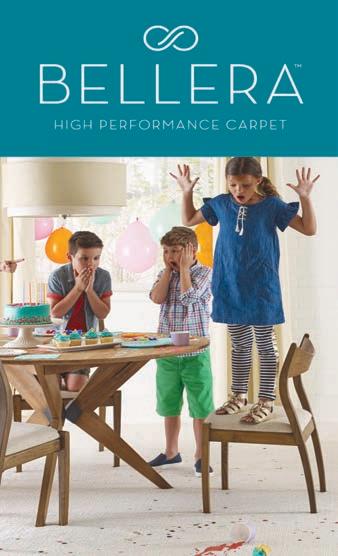

like. Organization can keep you on course.






Harness your strengths and weaknesses




















Some people clean because they are stressed or angry, others do so to avoid other tasks. Keep personality in mind when establishing a cleaning schedule. For example, clean at night if you’re a night owl, or wait until you are feeling antsy before embarking on a “calm down cleaning.”


Tackle seasonal chores first





Some tasks need to get done to prepare for the spring and summer season. These may include cleaning the grill and sorting through outdoor furniture















and decor. Spring cleaning may involve readying the pool for another year of use, or cleaning out rain gutters to prepare for spring storms. Tackle timedependent tasks first and then move on to others that are less time-sensitive. Spread out the work







Some people like to devote full weekends to spring cleaning, but that can be overwhelming for others. Breaking down cleaning tasks into 15to 30-minute intervals each day can make the job more tolerable. Spring cleaning season has arrived, and certain tips can make the job more efficient and manageable.

Home renovation projects are significant undertakings. It is common for homeowners who may not have the time nor the expertise to do the work themselves to call in professionals to tackle these jobs.
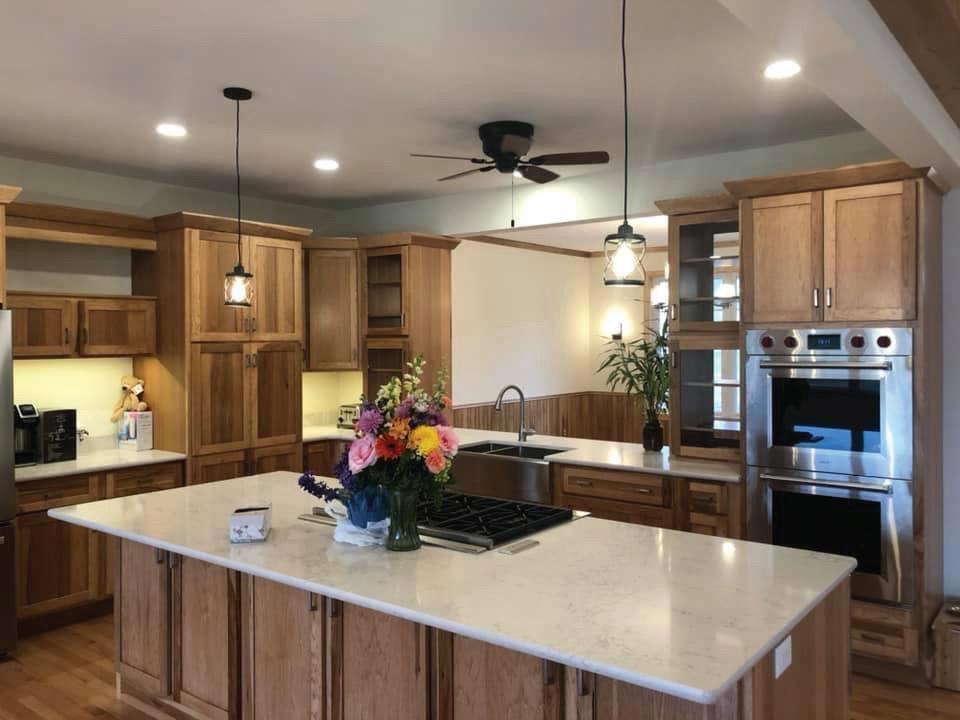
According to the home improvement resource HomeGuide.com, for a bathroom remodel, which is one of the more popular improvement projects, installation and labor accounts for 10 to 25 percent of the total project cost. In general, many contractors pay themselves $300 to $500 for an hourly rate, while helpers may make $150 per hour. Materials used account for the other components of an overall project cost. Homeowners negotiate the best rates possible by obtaining a number of bids from contractors, spelling out both labor and material costs and determining their best option. Here’s how to compare bids.
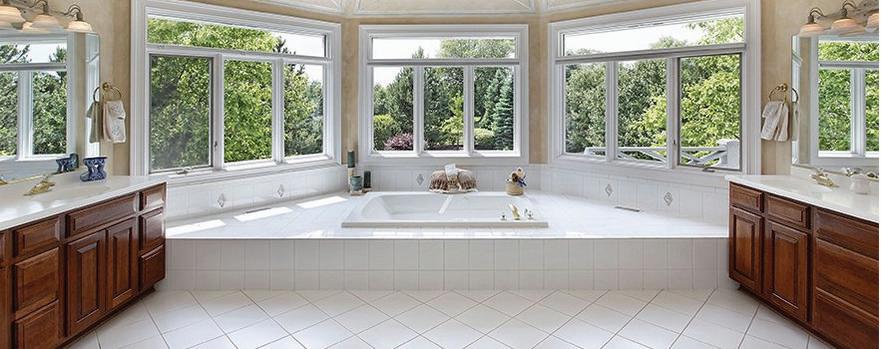
Check as many reviews as possible
Go online, ask friends for recommendations, or rely on the Better Business Bureau to find reliable contractors. A contractor who seems too good to be true will not necessarily be so, but it’s still best to vet each professional thoroughly prior to signing a contract.
Cost basis vs bid basis
Certain contractors will produce an estimate based on the best guess of the cost of supplies then add on a flat fee or percentage for their services. This is called a cost basis bid. Others will create a bid that includes all their anticipated supply and labor costs, known as a bid basis bid. Know what you’re getting to make the most accurate comparison.
Create a master itemized checklist

It’s easy to explain the project differently from one contractor to another when doing so verbally. That may result in a different plan and price. Rather, make a checklist of what you want done and have several copies to give to the contractors with whom you meet. This makes it easier to compare costs line by line.
Have specific materials in mind


Make sure bids are based on the same materials and tasks. For example, if you’re comparing window replacement quotes, be sure that each quote is based on the same window material and coating. Vinyl replacement windows may not cost the same as fiberglass or wood. It is much easier to compare pricing when contractors provide estimates reflecting the same materials.
Small versus big contracting companies

Some bids may differ based on the
manpower of the company. One contractor may view a project as an easy one that can be slipped right into the schedule. Another may have to devote more time and effort if it is being undertaken by one or two people. This can affect cost in the quote. Furthermore, a contractor who does a lot of advertising in print, television or online, or has an office or warehouse space, may have extra overhead costs that are passed on to the customer.




Doing your own demo





Figure out if the contractor will allow you to perform a portion of the tearout, clean-up or other tasks to save on labor costs. Make sure this is included
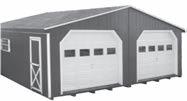

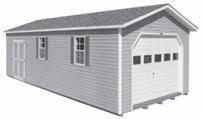


















in the bid.

Comparing contractor work bids can be tricky, but it helps homeowners know they’re getting the best value for their money.
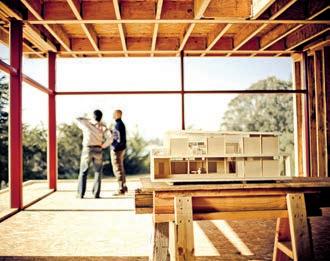



Springtime is a perfect opportunity for homeowners to begin planning renovations to enhance the interior and exterior of their living space. Because of its strong performance capabilities, low maintenance and design flexibility, brick is a popular building material choice when looking to improve or refresh your home in time for warm-weather hosting season.

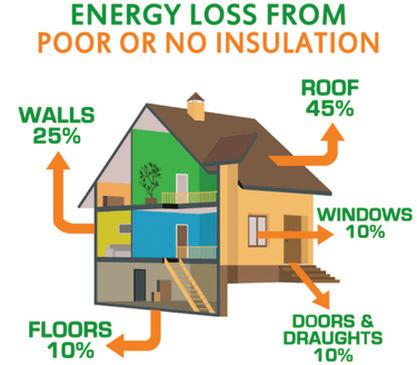
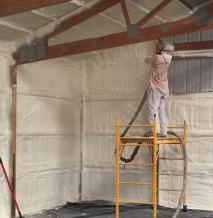








Often selected for its functional benefits, brick is available in a wide array of colors, textures and sizes that can match varying design styles, from modern to traditional and almost everything between. If you’re considering adding brick to your home’s aesthetic, consider these five projects to tackle this spring from the experts at Glen-Gery, one of the largest brick and stone manufacturers in North America.

Basement or patio bar: As homeowners spend more time at home, they often look to maximize livable space. One way to take advantage of unused living space is building a basement or patio bar, which provides an area for entertaining. Using an exposed brick wall can help designate the bar area and separate it from the rest of the basement, or lining a bar counter with brick can create a rustic
contrast against the bar’s seating.

Fireplace: To change the look and feel of a room almost instantly, you can use brick to give a fireplace a facelift or make it a focal point of your home. Available in a variety of colors and textures, GlenGery’s diverse, premium portfolio of more than 600 brick and stone products can elevate your living room’s style in a big way and create a more inviting area to share with family and friends. An outdoor fireplace is another option for extending livable space in a cozy way that can be used throughout the year.
Accent wall: Create a statement in or outside your home with a brick accent wall. Accent walls can help bring color, texture and beauty to homes by breaking up the monotony of monochromatic color or decor, creating visual interest and dimension. While brick in a running
bond pattern is expected, you can spice up rooms with an unexpected bond pattern like a stacked bond for modern appeal or herringbone for a rustic look.







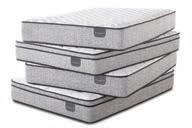
















Kitchen backsplash: One of the most overlooked areas of kitchen design is the backsplash. While its job is to protect your kitchen walls from the never-ending assault of kitchen splatters, there’s no reason it can’t look good, too. Brick backsplashes can accommodate most home designs and styles thanks to the versatility of shapes, colors, finishes and sizes available.
Black or white glazed brick works well with more modern kitchens while irregular brick containing an abundance of texture and a messy mortar application






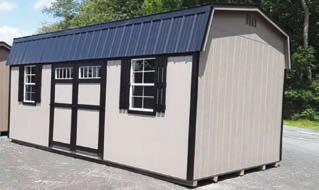



can complete rustic farmhouse kitchens. An option like Glen-Gery’s virtual design tool, Picture Perfect, can help you visualize projects in your home to see what fits your style and needs.

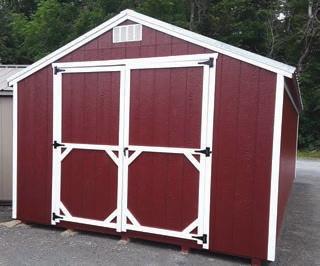


Brick skirt: For added curb appeal, consider adding a brick skirt around the foundation of your home. Given its resilient, durable and energy-efficient qualities, brick can help provide better insulation and protection while also adding visual appeal to the exterior of your home through texture, color and contrast. The skirting can also continue through to the front porch floor and steps, helping balance out the elevation of your home. (Family Features & GlenGery)









Home renovations provide a host of benefits. Such projects can increase resale value and improve on the safety, aesthetics and functionality of a home.
Some homeowners may employ the mantra “go big or go home” when they embark on home improvements, thinking that only the largest renovations produce noticeable change. But that’s not the case. Various smaller renovations can provide a lot of bang for homeowners’ bucks as well.





Countertops (and hardware): A complete kitchen overhaul may stretch some homeowners’ budgets. However, changing an older countertop for a new material can provide the facelift a kitchen needs. And while changing the cabinets may be homeowners’ ultimate goal, swapping hardware in dated finishes for newer handles and pulls can provide low-cost appeal.



Paint: Painting a space is an inexpensive improvement that adds maximum impact. Paint can transform dark and drab rooms into bright and airy oases. Paint also can be used to create an accent wall or cozy nooks. Homeowners also can showcase their personalities with their choice of paint colors.







Lighting: Homeowners should not underestimate what a change in lighting can do. When rooms or exterior spaces are illuminated, they take on entirely new looks. It’s worth it to invest in new lighting,


whether it’s a dramatic hanging light over the dining room table or task lighting in dim spaces.


Weatherproofing: Improving windows, doors, weatherstripping, and insulation in a home can offer visual appeal and help homeowners save money. The initial investment may be significant, but those costs will pay off in energy savings. According to One Main Financial, space heating is the largest energy expense the average American homeowner has, accounting for around 45 percent of all energy costs.

Mudroom: Turn an entryway into a more functional space with the addition of cabinets, benches or custom-designed storage options that perfectly fit the area. Cubbies and cabinets can corral shoes, umbrellas, hats, bags, and much more.
Accent updates: Any space, whether it’s inside or outside a home, can get a fresh look with new decorative accents. Invest in new throw pillows and even slipcovers for living room sofas. Use new tile or paint the brick on a fireplace in a den, then update the mantel with decorative displays. Purchase wall art that can bring different colors into a room. Change the cushions on deck furniture and buy color-coordinated planters.

These subtle changes will not cost as much as full-scale renovations, but they can still help homeowners transform their homes.






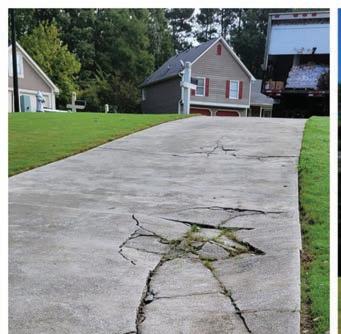


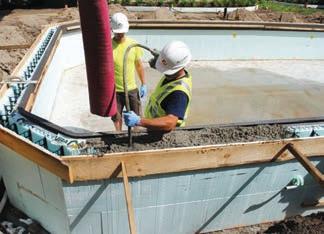





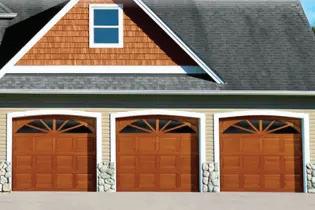


Upgrading your home design is an opportunity to tap into new color schemes. Knowing what shades are trendy and how different hues can work together for a cohesive design is an important step in creating an attractive design aesthetic.
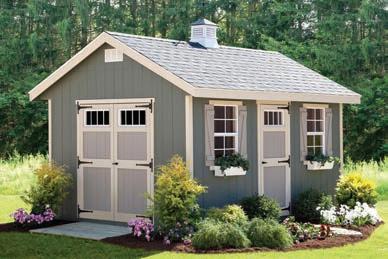

While you might turn to family or friends for inspiration for your next DIY project, another resource for collecting concepts and options to upgrade your space is the internet. Consider the Valspar Colorverse, which allows visitors to explore colors in a unique way and offers paint color inspiration and decor trends they can envision within their own homes.


After experiencing the Valspar 2023 Colors of the Year firsthand by painting walls and art from the collection to see the 3D virtual house come to life, you can find the perfect paint shade for your space.
“Through the Color-verse, visitors can experience the 12 Colors of the Year in a realistic virtual home,” said Gus Morales, vice president of brand marketing for CBG Sherwin-Williams. “Aside from exploring the Colors of the Year, the home is an engaging space for visitors to create art, play games and order paint chips to see how their top color picks look and feel in their homes.”
Color Trends to Consider









Many of this year’s popular natureinspired designs are all about finding
comfort, embracing a flexible lifestyle, rediscovering joy and leaning into the growing DIY movement. The most trendworthy, forward-thinking and livable colors reflect specific facets or emotions of life so you can update your well-used spaces with thoughtful colors that evoke positive energy and lasting change.
Comfort and Contentment: If your goal is to create a space that envelopes you in a sense of comfort, consider a white with a yellow undertone that makes a space cozy like a soft blanket, like Cozy White from Valspar. Complement the softness with a muted clay that brings in brown undertones that suggest gentle contentment.
Calming Restoration: Tap into the calming tones of nature with a hazy green that has duality, which brings in both the


















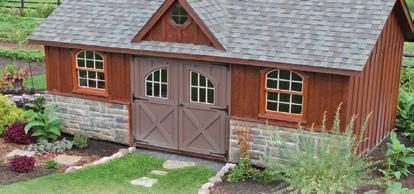


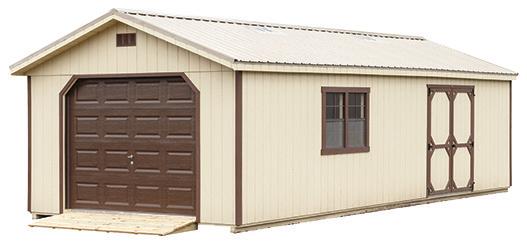

calm and liveliness of the great outdoors. Another option is a deep midnight blue used as an elegant calming shade to restore mind, body and home.


Healthful, Mindful Living: Create an uplifting space where your wellness is a priority. Evoke a greater sense of health consciousness with a light blue that has a dose of softness used as a fresh neutral with uplifting qualities of a modern pastel, like Valspar’s Rising Tide. Reinforce the benefits of mindful living with a cool gray that is balanced by the warmth of the yellow undertone, a natural hue like a cotton muslin cloth.
Connections and Joy: Establish spaces where you can celebrate relationships with others, the world around you and happiness in your being. Consider hues


















like a white softened by a violet undertone, a harmonious shade promoted by digital connectivity. Evoke joy with a dependable classic tan that features a yellow undertone suggesting new life with uplifting qualities.



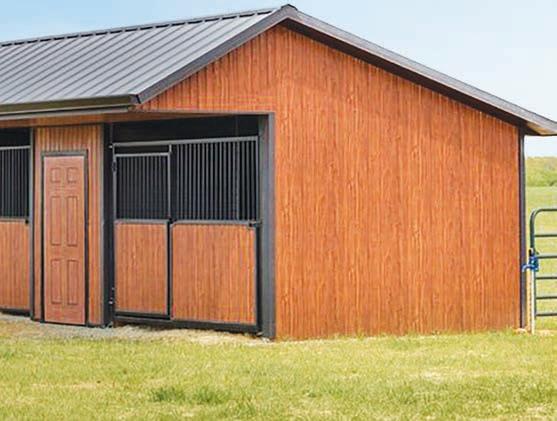
















Natural Balance: Bringing hints of the outdoors into a well-loved living space creates a soothing ambiance. Consider a warm neutral brown tone inspired by the shades found in nature or a cooled down blue that strikes a beautiful balance between cool and warm shades in your design.
Inspirational Thought: A work-fromhome or crafting space needs color to inspire great thinking. Try a faded natural terracotta that sparks individuality and warmth or a deep blackened olive, an ontrend neutral that embodies charm and sophistication. (Family Features & Valspar)





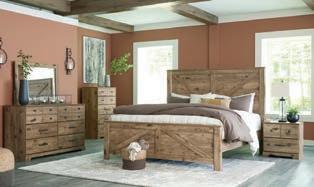
When the new year arrives, many people focus on changes that can be implemented in the months of come. This time of year is a popular one to make resolutions to clean and organize homes and offices. There are plenty of things that can use a little organizational attention. There’s no ideal way to get organized. Whatever works is a good approach, but the following are six strategies to help individuals clear the clutter.

1. Utilize to-do lists People tend to be less productive










when they’re storing all of their tasks in their brains. The first step to getting organized is to remove those plans from the head and put them down on paper or in some other tracking tool. A digital to-do list manager, for example, enables you to see all of your tasks, deadlines and due dates in one place so you can get things done more efficiently. Carry around a notepad or use the digital notes app on a phone to jot down thoughts and needs as they come up.
2. Corral your “smalls” Smalls are keys, phones, chargers,





wallets, headphones, and other accessories. When these items are grouped together, they’re easier to find so you can stay on track. Invest in an attractive organizer and install it by the front door or another high-traffic area. You’ll cut down on trying to find those smaller items when running errands.
3. Conquer clutter regularly
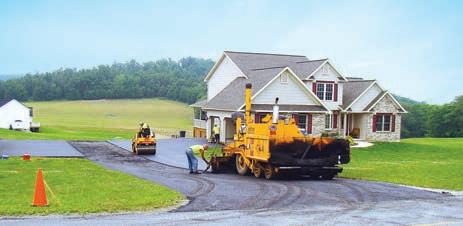
It’s easy to be put off by cleaning and organizing when clutter has gotten out of control. Instead, by cleaning up items on a daily or weekly basis, it’s much easier to keep ahead of clutter. Treat it like a daily job, including sorting mail and tossing unnecessary
items; emptying waste pails; dusting the desk; deleting emails; and putting items back where they belong.

4. Categorize emails

Utilize the folder creation option from popular email providers to sort your messages. Drop messages that need attention into categories of your choosing, such as school, health and receipts. Then you’ll know which folder to
go into when searching for what you need, eliminating the time-consuming task of scrolling through a full inbox.


5. Give one; toss one




When bringing new items into the home, follow the procedure of giving away or throwing out one item for each new item that is received or purchased. This can help to tame clutter.


6. Mise en place your
“Mise en place” is French for “put in place.” It is used in the kitchen to refer to preparing and setting out all ingredients needed in a recipe. The same concept can be used elsewhere. Lay out clothing on the dresser for the next day at work or school. Prep the foyer of a home with items you need, like an umbrella, shoes and paperwork. Organize backpacks so they’re ready for the school day. Establish a to-go bag at work for items that need to be brought home.
Getting organized can be as simple as taking small steps that have lasting impact.
Warm weather paves the way to more opportunities to enjoy fresh air. For homeowners who have the luxury of outdoor spaces, including private patios, now is the time to start thinking about projects to enhance these gathering spots.
A patio can be considered a transitional area that links the outdoors to the inside of a home. According to the home and lifestyle resource The Spruce,
a patio is often an oasis for lounging and entertaining. And depending on homeowners’ budgets and preferences, a patio can be just as comfortable and stylish as interior spaces. The following are five patio projects that can transform these valuable spaces.
1. Pretty pergola
A pergola is an open-air (traditionally wood) structure that adds a measure of shade and privacy without completely blocking views of Mother Nature.
Installing a pergola over the patio helps define the seating area. Hanging plants can add to the ambiance and string lights can make this a great spot to gather when the sun sets.
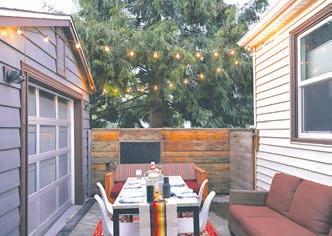
2. Patio fire pit
Build a fire pit right into the design with the same materials used to create the patio. For example, if the patio is brick or flagstone, build up to create an eye-catching fire pit. Fire pits not only look good, they also expand the time frame that the patio can be enjoyed, offering cozy spots to sit even when the weather chills.
3. Frame it in

Make the patio a true extension of the








inside by putting up walls around three sides of the patio if it connects to the home. Leave the last open to the yard, or consider installing screens to mimic the look of popular lanais. The walls will offer more weather protection,
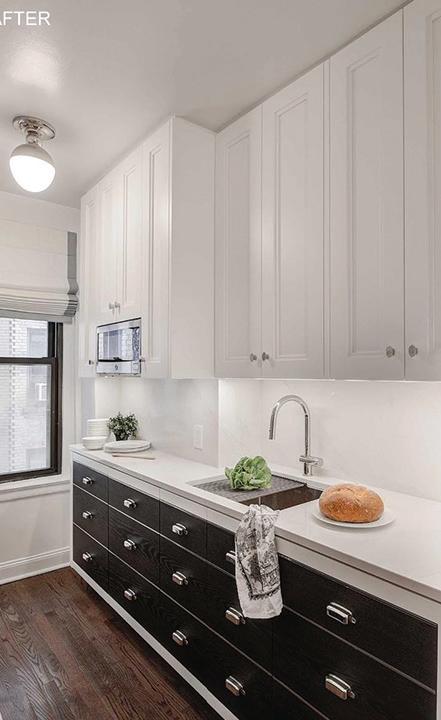
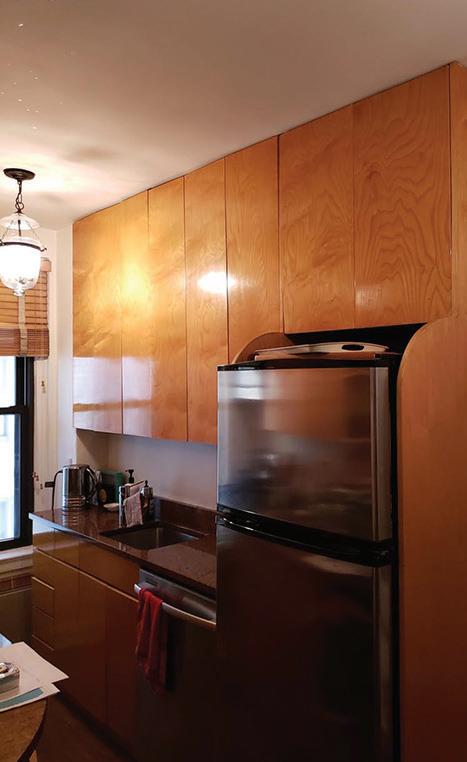
meaning you can invest in high-quality patio furniture to make this a fully functioning outdoor living room. Hang a television that is rated for outdoor use for movie-watching under the sun or stars.

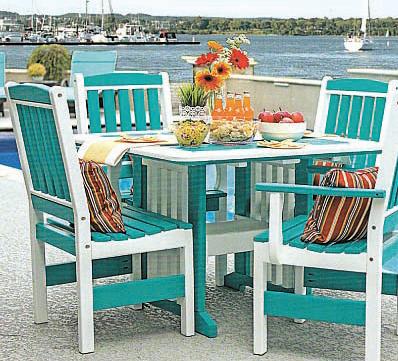







4. Ooh la la Vintage bistro tables and chairs can turn a drab patio into one that calls to mind a Parisian courtyard. Whimsical lighting and accents that you would normally think to see indoors, like a gilded mirror, can add extra appeal. Soften wrought iron and other metals on the furniture by including plenty of flowers and greenery. Don’t forget the candles and a place to stash a bottle of
chilling wine.





5. Farmhouse chic Transform a patio into an entertaining space that caters to guests. A large farmhouse style table flanked by benches and some upholstered chairs sets the scene for a dinner amid the fresh air. Watering cans filled with wildflowers and mismatched flatware establish a casual feel for gatherings in the space. For those who plan to cook and serve outside with frequency, invest in outdoor appliances so you’ll never have to miss a beat with guests. The options for transforming patios into stylish gathering spots is only limited by the imagination.



The home improvement industry has been booming for years, but forecasters are projecting a deceleration in 2023 and perhaps beyond. Estimates from the Home Improvement Research Institute, which is the leading market research resource for the home and building products industry, indicate that growth in the home improvement products market is expected to decelerate from 7.2 percent in 2022 to 1.5 percent in 2023. Inflation continues to affect consumer spending, and homeowners may be looking to spend less on renovations in the year ahead.


Minor upgrades that aren’t as costly as larger projects can still make a big difference, especially among prospective buyers. When looking for minor upgrades that can help sell a home, homeowners can rely on Remodeling magazine’s annual “Cost vs. Value Report.” That report analyzes costs for an assortment of remodeling projects and determines the value of those projects at resale. Though resale value depends on a host of variables, including location, the following are some relatively minor exterior upgrades that impress buyers and provide a strong return for homeowners.
Garage door replacement: Garage doors matter more than sellers may recognize, as various real estate professionals note that buyers appreciate homes with updated garage doors. That’s good news for homeowners, as














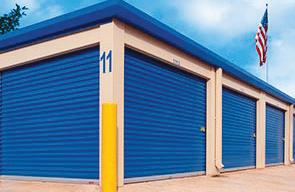















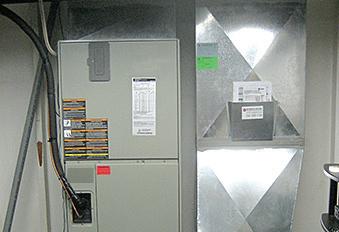
the “2022 Cost vs. Value Report” indicated homeowners recoup roughly 93 percent of their garage door replacement investment at resale. The average cost of such a job is right around $4,000, making this a budgetfriendly remodeling project.







Window replacement: The cost of new windows will depend on just how many windows must be replaced. But there’s no denying buyers like the idea of low emissivity (low-E) windows, which can cut energy bills by a significant amount over time. The Office of Energy Efficiency & Renewable Energy estimates that heat gain and heat loss through windows is responsible for between 25 and 30 percent of residential heating and cooling energy use, so sellers who can tell buyers they have new low-E windows can emphasize those savings in home listings. The “2022 Cost vs. Value Report” indicates that homeowners recoup roughly two-thirds of their investment in new windows at resale. Landscaping: Well-maintained landscaping is another home exterior component that can make a strong first impression on buyers. A recent survey of nearly 7,000 realtors conducted by the National Association of Realtors found that upgrading a landscape recouped roughly 83 percent of homeowners’ initial investment at resale. In addition, 11 percent of realtors surveyed indicated that an upgraded landscape was the decisive factor that closed the deal for the house.

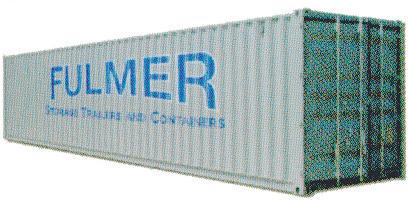




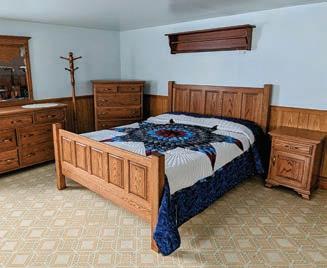



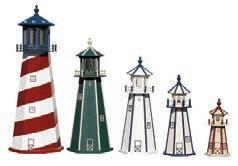
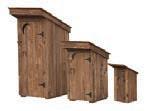
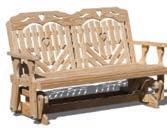


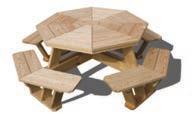

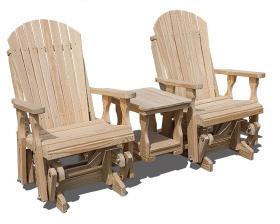
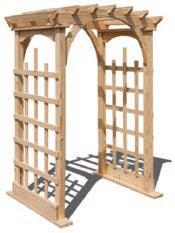

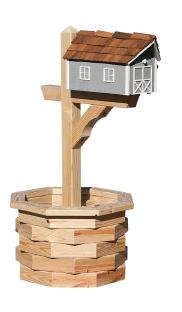




After months spent largely indoors while harsh elements battered your home’s exterior, many homeowners are throwing open the windows and embracing spring’s arrival.
Every home requires ongoing maintenance to ensure its living up to its aesthetic and functional best. This checklist can help you create a comfortable home setting for enjoying the warmer months.
Check gutters. During the colder months, debris can accumulate in the gutters, which can be problematic when spring rains arrive. Clogged gutters prevent water from flowing efficiently away from the roof and house. When they’re backed up, they can cause water damage in a short amount of time. Faulty guttering can also cause slow leaks that lead to damage you may not discover until major repair work is needed. Properly functioning gutters are clear of debris, flow freely and are securely attached to the home.




Inspect the roof. Your roof takes a real beating in all kinds of weather conditions. Making it a common practice to carefully inspect the roof with the change of seasons can help you identify potential problems while they’re still in early stages, before a big storm hits and




















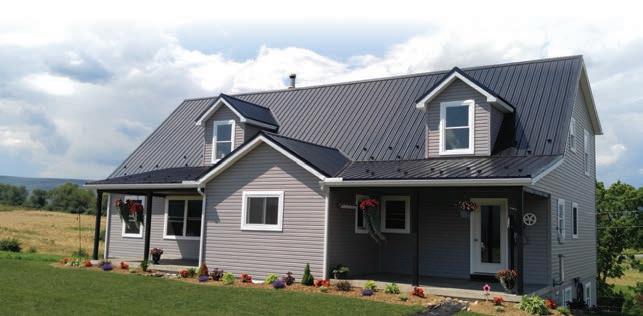
major damage occurs. Some roof issues can be addressed with simple repairs you can do yourself while others may require a professional. A roofing expert can help you determine whether any trouble areas can be patched or if a more complete restoration is in order.


Service air conditioning units. Your heating and cooling system works hard to keep your indoor climate comfortable when extreme temperatures make the outdoors unbearable. That’s why it’s important to have your systems serviced by a professional, and spring is a smart time to do so before they’re hard at work throughout the warmer months. Service can correct problems and ensure everything is operating efficiently, which can lead to money savings as well.
Repair window screens. Throughout the winter, your home’s window screens can accumulate a layer of dirt and grime that isn’t just unsightly; it blows indoors when you open the windows to welcome a fresh breeze. What’s more, if your screens have rips and tears, pesky bugs and other critters can make their way into your home more easily. Cleaning and repairing your screens can make your home more secure and help protect your indoor air quality. (Family Features & InOvate)









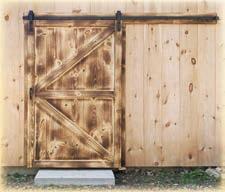
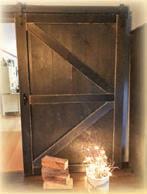


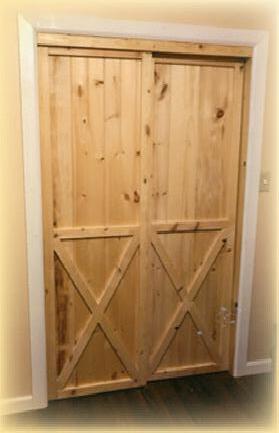


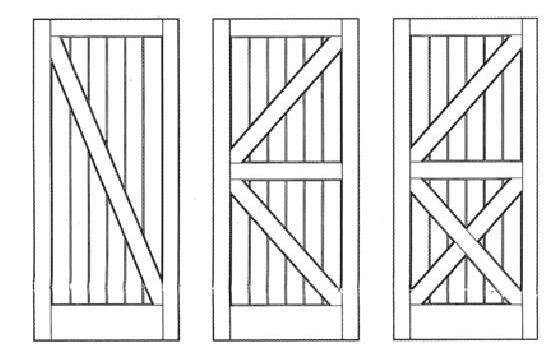
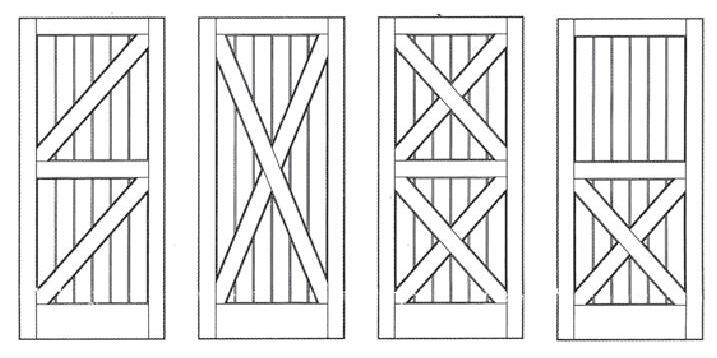












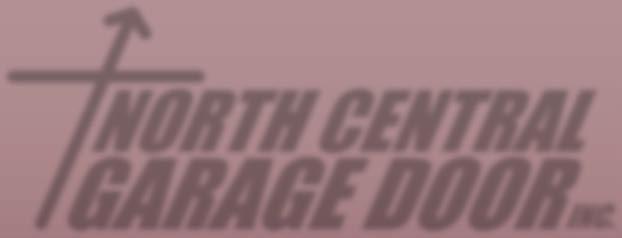










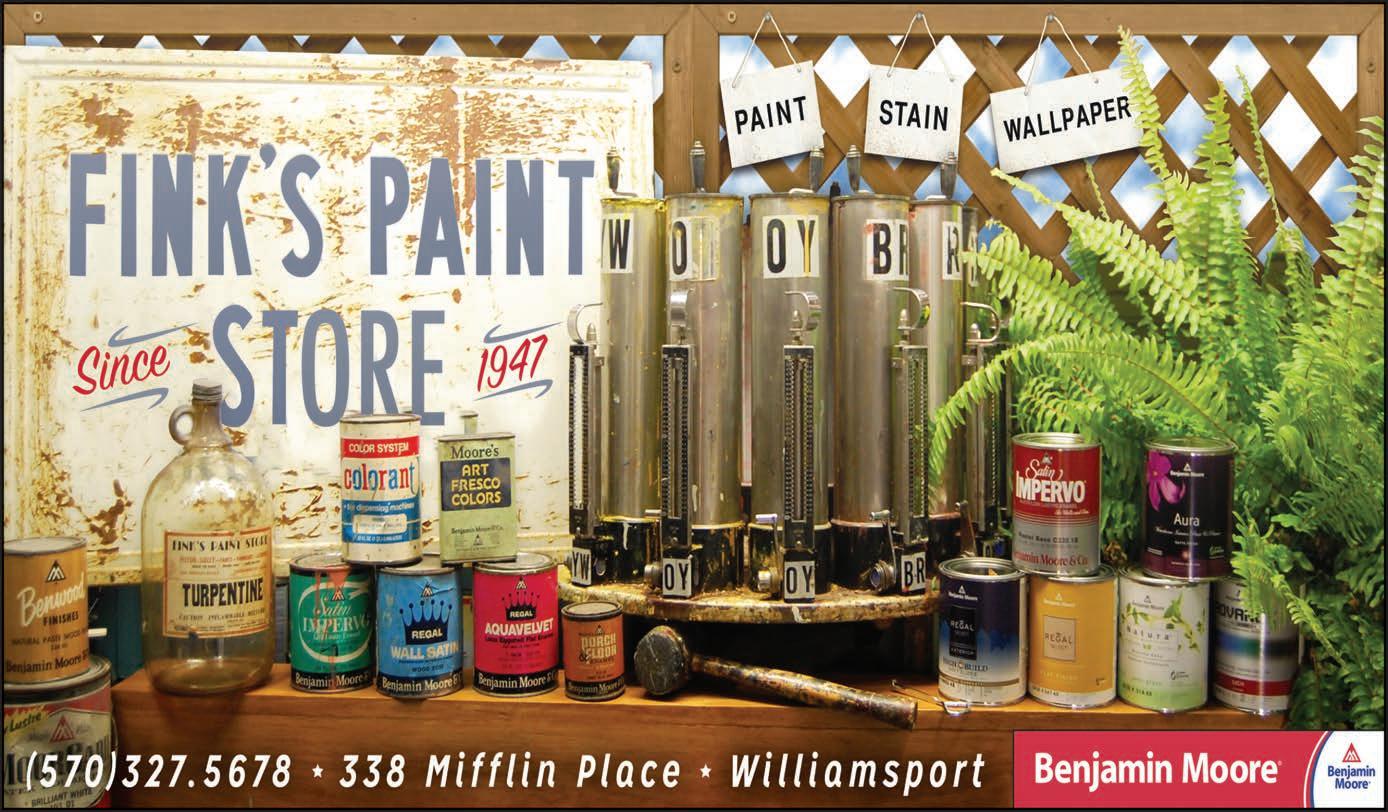




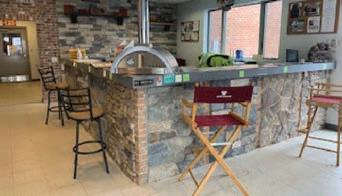



Individuals looking to renovate their homes typically reach out to a number of professionals for estimates before choosing a contractor. Once that decision has been made, it’s customary to sign a contract to ensure all parties are protected during and after the work.

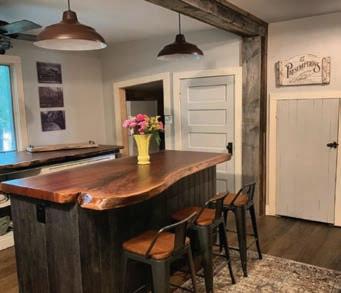
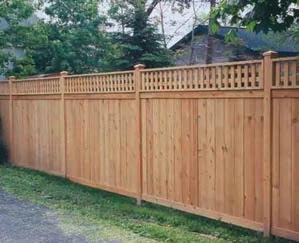
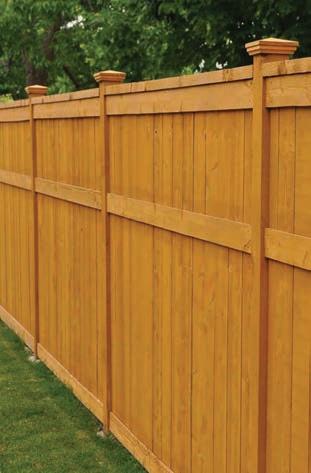
A renovation contract outlines the details of a remodeling job. The construction company or the general contractor will create this legal document, which will list the steps of the job and how issues will be resolved should problems arise. Prior to signing a contract, however, homeowners should engage in a conversa-





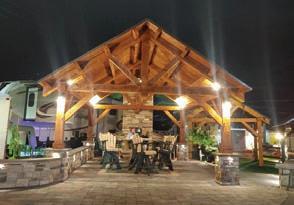

tion with the contractor and ask key questions. How long have you been in business? Verify the information that the contractor and/or company provides by doing a search with the Better Business Bureau and perusing online reviews to confirm the company is dependable.

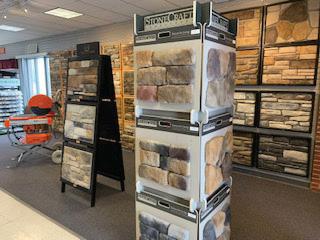
Are you independently owned? Some companies are independently owned businesses while others are franchises. Franchised businesses may have to follow a strict set of rules, while independent contractors may have more leeway in terms of policies.
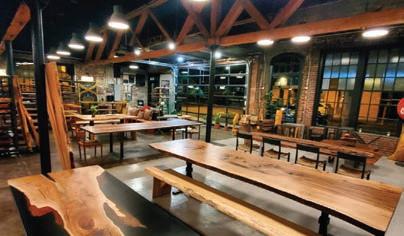


What is your license number? Obtain the li-






censure information as well as the contractor’s insurance details. A contractor’s general liability insurance protects your home and property in the event of an accident.


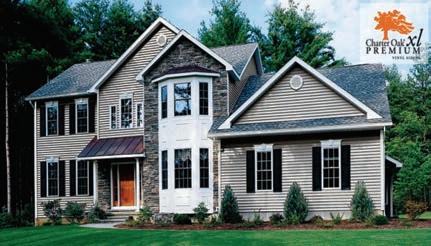
Are you familiar with local building codes? Check to see if the contractor has worked in the area before, and if he or she is familiar with the permit process. Make sure a contract documents who will be securing the permits.

How will the project be supervised? Some contractors sub-contract out the work and may only stop by to check on progress. Understand how often those drop-ins will take place, and how to get in touch with the person in charge should a problem arise.

Is there a warranty? Certain contractors will stand behind their work for a period of time, even coming to make repairs if there are any issues. Check to see if a warranty policy is in




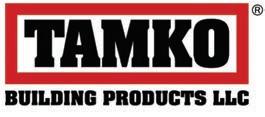
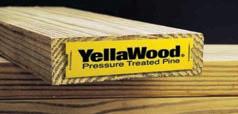





place.

What is the policy for home protection and clean-up? You’ll want to ensure the rest of your home doesn’t become damaged or soiled due to the construction. Have the contractor spell out plans for mitigating mess during demolition, and whether the construction company will be responsible for removing the debris. What is the final price? One of the more important questions to ask is if the price stated on the contract will be the final price, or should incidentals be expected if issues are unearthed during construction? Some contractors may need to tack on charges for extra materials, and that can stretch homeowners’ budgets. It’s important to touch base with the contractor and ask key questions about the project, which will be reflected on the contract both parties eventually sign.


























There’s no place like home, especially when that home is a comfortable and safe haven. One of the ways residents find comfort in their homes is by maintaining the right indoor temperatures, which fluctuate along with the seasons. While there is much to be said about opening windows and doors to let Mother Nature do her thing, indoor comfort is often maintained with an HVAC system.
HVAC stands for heating, ventilation and air conditioning. It can include heat pumps, furnaces and air conditioning units. It is an automated system that works by adjusting a thermostat to regulate air temperature, and sometimes humidity, in the home. According to Enviguard, a commercial contracting provider, HVAC systems also may be used to improve indoor air quality through filtration and oxygen replacement.

As with any mechanical device, an HVAC system has a life span that must be considered. Should any of the following conditions be present, it is likely time to consult with an HVAC technician to see if repairs or replacement of the entire system is warranted.
1. Age
If the HVAC system is more than 10 years old, it could be time to begin budgeting for a new unit. Many modern, efficient systems may last 12 to 14 years with routine maintenance. But it’s good to keep an HVAC system’s age in mind so you can readily recognize when it might start to fail.
2. Longer or constant running times

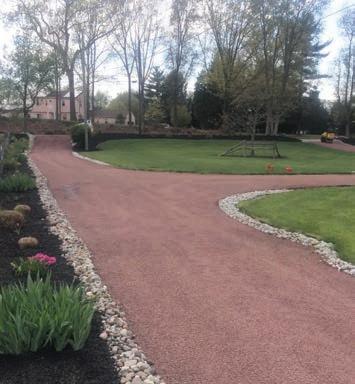
An efficient, properly working system will quickly heat or cool the home and then turn off. A system that is turning on repeatedly or having to run for a while before the set temperature is reached could be nearing the end of its utility.
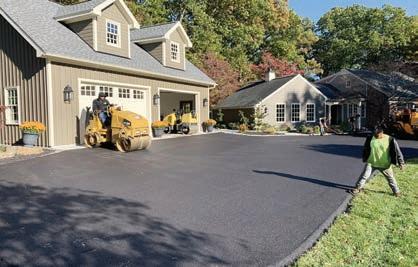
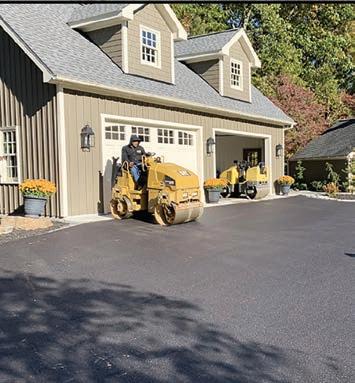


3. Strange noises
Groaning, banging or loud humming noises should be addressed. While these noises may indicate that certain components need maintenance or replacement, they also could be symptoms of age and a system nearing failure.
4. Frequent repair visits
Knowing the HVAC company’s repair person by name is a sign that the system has required too much work in recent months. Repeated issues and repairs are probably signs that it’s time


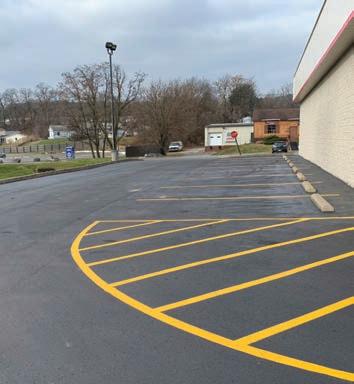
to consider a system replacement.
5. Higher bills
Sticker shock when receiving electricity or gas bills likely mean the HVAC system isn’t working efficiently and might need to be replaced.
6. Poor indoor air quality
If the home is dusty or humid or even if allergies seem to have cropped up out of nowhere, this could indicate a poorly functioning HVAC system. HVAC systems are vital to keeping indoor environments comfortable and safe. Such systems may exhibit certain signs that indicate they need to be replaced.
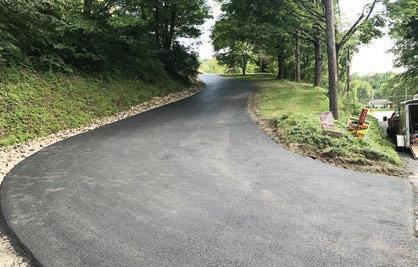


As any homeowner knows, renovation projects tend to cost a lot of money. The average cost of a home renovation is difficult to gauge, as such endeavors run the gamut from complex projects like a kitchen overhaul to simpler ones like painting a room inside a home. Indeed, the National Association of the Remodeling Industry notes that scope is what drives the cost of a renovation project.












Though there might not be an “average cost” of a renovation project, homeowners can expect to spend thousands of dollars on projects that are not very small in scale. Navigating such an expense at a time when inflation remains high might be difficult for some homeowners looking to maintain the appearance of their home exteriors. However, there are many budget-friendly ways homeowners can tend to the exterior of their properties.











Power washing: Power washing won’t break the bank, but it can revive the look of a home. Power washing removes dirt and grime from the siding of a home and a power washing can be used to clean porches, walkways, and patios as well. Hardware chains like Home Depot and Lowes typically rent power washers, but homeowners who don’t want to do it

themselves can hire a professional for a few hundred dollars, if not less. Power washing after winter can be a good idea, as the elements can take a toll on a home’s exterior. A good power washing before spring and summer entertaining season can thus give a home a fresh, clean look without breaking the bank.

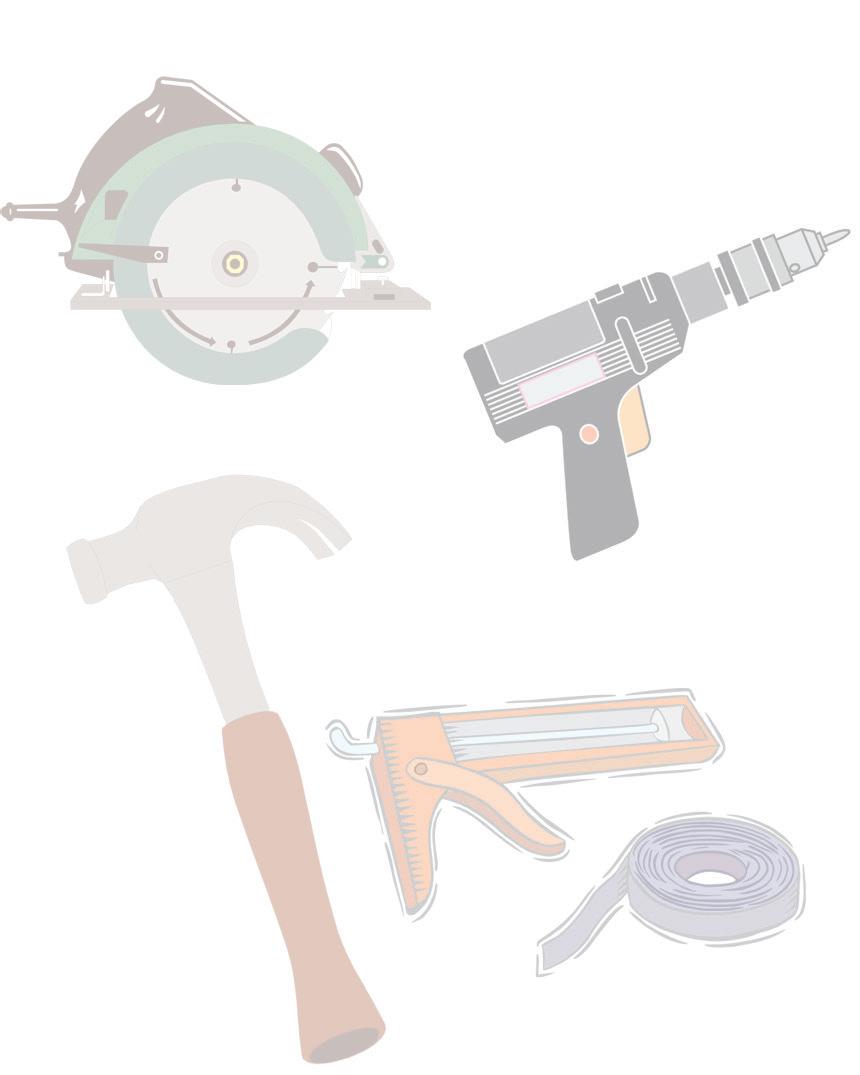







Furnished front porch: A furnished front porch can serve as a welcome sign


to neighbors and provide a great place to relax with a morning cup of coffee and a good book. Homeowners with a small porch won’t need to bust their budgets to upgrade their front porch furnishings. Some small chairs with bright cushions, a small table and a rug underfoot can revamp an entryway at low cost.
Window box installation: Installing window box planters is another costeffective way to brighten up a home’s exterior. Homeowners can hang window boxes outside windows on the front of their homes and then fill them with brightly colored flowers to add an inviting pop of color to their home exteriors. The experts at Better Homes & Gardens urge homeowners to take
weight into consideration before buying window planters. Keep in mind that soil and developed plants can be heavy, so look for a sturdy box as well as one that has drainage holes.
Replace hardware: Another simple way to freshen up a stale exterior is to replace hardware. Doorknobs, knockers, house numbers, and even the mailbox can appear dated after a while. Replacing these items is inexpensive and quick but can have a profound impact on how the exterior of a home appears to residents and visitors.
Exterior renovations need not break the bank. Various simple and inexpensive tweaks can quickly revitalize the exterior of a home.


CONVENIENT - Quick and easy to schedule and pick up when ready to cut firewood.






AFFORDABLE - One affordable rental payment a year versus monthly payments.
ECONOMICAL - Most of our units use one gallon of fuel an hour or less.
SIMPLE - All units are rental friendly.
TIME SAVINGS - Instead of consuming every weekend slaving away at the wood pile, enjoy your new-found freedom doing things you enjoy.
RELAXING - Wood shed is stocked, ready for winter, let it snow, you are prepared.
NO MAINTENANCE - It is our machine, we are responsible to maintain it.
SOCIALLY FRIENDLY - Most of our neighbors will be there to watch and offer advice!

SAFE TO OPERATE - Multiple safety guards help minimize accidents.

CUSTOMER SUPPORT - We provide training and support with each rental.


FUN TO OPERATE - Once you get hooked, it is hard to stop.


Renovations are a great way for homeowners to reshape their homes. Some may aspire to renovate so their home is more reflective of their personal taste, while others may do so in an effort to make their homes better align with modern styles and sensibilities. Regardless of why a homeowner chooses to renovate, the need to do so is often evident to the naked eye, especially when the time comes to update home exteriors.
Curb appeal is often discussed in regard to the effects it can have when









selling a home. But curb appeal is equally important for homeowners who aren’t putting their homes on the market. A well-maintained, aesthetically appealing home is a source of pride, while a home with fading curb appeal can make homeowners feel a little sheepish. Homeowners who want their homes to maintain their curb appeal can look for signs that it’s time to update their home exteriors.
Curling shingles: The roof may not be the first thing people think of when

















Upgrading a driveway and walkway is one way to update a home’s exterior and restore its curb appeal.

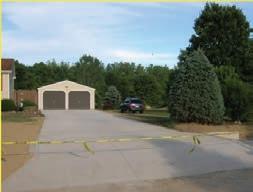
pondering curb appeal, but a damaged roof can contribute to problems that ultimately affect the exterior and interior of the home. Multiple curling
shingles indicate it’s time to replace the roof. The sight of curling shingles is not pretty, but the larger issue in such instances is the potential for costly water damage when water gets in through the affected shingles.






Dated entry door: Many home improvement experts insist they can determine when a home was built or most recently renovated simply by looking at the front door. Steel and glass doors are popular in modern homes, so homeowners with front doors with ornate designs and oval glass inserts can likely benefit from an upgrade to
their entryway. A modern front door can make a statement and real estate experts note how popular updated front doors are among buyers.
Unsightly landscaping: It’s not only the physical components of the home that may suggest an update is necessary. Homeowners without a green thumb may have exterior landscaping that has seen better days. If a spring or summer day spent tending to your landscaping is not your ideal weekend pastime, then consider replacing unsightly landscaping with low-maintenance plants or hardscaping. These
alternatives to more needy plants can create curb appeal without requiring any extra work for homeowners.



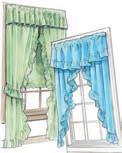
Cracked driveways/walkways: If the driveway looks like a busy road at the end of snow plowing season, chances are that’s adversely affecting the impression people have of your home. In addition, cracked walkways indicate a need for renovations, as these areas are front and center when welcoming guests.

























Updating a home’s exterior can restore curb appeal and help homeowners feel better about their properties.






The home renovation industry is booming, and that’s reflected in the cost to upgrade a home. Home Guide says remodeling a kitchen, costs $25,000 on average, and a bathroom renovation runs around $10,000. Though rates fluctuate depending on a host of variables, renovations can cost $15 to $60 per square foot depending on the project.

The average homeowner wants to save as much money as possible when renovating their home. Many think doing much of the work themselves is the easiest way to keep costs low. What some homeowners may not realize is that DIY can be costly and prove a big hassle in the long run. The following are some hidden costs of DIY and renovating in general.
Time: DIY projects are a major drain on free time. Homeowners taking the DIY route typically work on weekends or after work. Few people can take off and devote their undivided attention to a remodel like a contractor can. Time is a valuable resource that is not renewable. Therefore, think of a DIY project in terms of what it would equal in lost wages. Because homeowners are not professionals, a DIY project may take double the time it would take a contractor. It may be worth it to simply hire it out.
Mistakes: Many resources are available to help DIY enthusiasts work on a project, but there are still tricks and techniques learned after years on the job. DIYers may damage their homes by taking shortcuts or not un-









derstanding how to do a job properly. A plumbing mistake, for example, may lead to flooding that damages another room in the home. And such mistakes may not be covered by homeowners insurance policies.

Fines: Permits are required for many home improvement projects. Forgetting to obtain permits or not realizing one may be necessary could subject you to hefty fines and/or force the job to be redone so it’s up to code. Professionals likely know the rules regarding permits and often include the cost of acquiring permits in an estimate.


















Remediation: It’s only after opening up walls or removing floors that you may discover issues you did not anticipate, such as termite damage or mold. These unforseen factors can drive up the overall costs of a project.
Disposal: Removing old building materials or gutting a room is part of many renovations. Chances are this refuse simply cannot be left at the curb for trash pickup. As a DIYer, you may not factor the costs for a dumpster or the time and money required to haul debris to a recycling or landfill center.

Tools: DIYers may have to purchase tools as they engage in new projects. These expenses can add up and negate the savings of doing some of the work yourself.
DIY projects may initially seem like a way to save money, but weekend warriors should calculate the hidden costs associated with DIY renovations before deciding to do some work on their own.

